
Strong and Virtually Leak-Free
DUCTMATE
Industries, Inc.
®
• Simple to install
• No additional sealing required
• Available in specialty metals
• Consistent connections
WDCI J & H
Rectangular Duct Connection System
RECTANGULAR
CONNECTION SYSTEMS
WDCI Sheet/6pg/7-98 1/5/99 9:59 AM Page 1

DESCRIPTION
PRODUCT GUARANTEE
WDCI J and H
Rectangular Duct
Connection System
All component parts of the WDCI Connection Systems are
guaranteed against defective material.
CLEAT
PVC CLEAT:
Polyvinyl chloride (PVC) is an organic polymer derived from
petroleum and salt.
PERFORMANCE PROPERTIES:
Relative high ignition resistance flash ignition 391ºC/735ºF
self ignition 454ºC/850ºF
Low fuel contribution
Lack of flaming drips
High external heat necessary to maintain combustion
UL723 (ASTM E-84) Test Data: Flame Spread:10
Fuel Contribution: 0
Smoke Density: 10
Service Temp: +32ºF to +150ºF
PVC Cleat is used around perimeter of transverse joint. Not
recommended for roof top applications.
METAL CLEAT:
WDCI Metal Cleat is roll-formed of 22 GA galvanized steel for
application around perimeter of transverse joint.
PACKAGING INFORMATION
WDCI connection systems consist of the following components:
a. WDCI J flange is roll-formed from 20 GA galvanized steel, with an
integral sealant.
b. WDCI H flange is roll-formed from 22 GA galvanized steel, with an
integral sealant.
c. WDCI J bolt corner pieces insert into the hollow web of the
WDCI J Angle.
d. WDCI H bolt corner pieces insert into the hollow web of the
WDCI H Angle.
e. WDCI metal cleat is roll-formed from 22 GA galvanized steel.
(PVC Cleat is available upon request).
f. Gasket is extruded butyl for use between mating flanges.
(Neoprene gasket is available upon request.)
WDCI J and H connection systems consist of roll-formed flanges,
corner pieces, gasket, bolts, nuts and cleat. The flanges attach to the
duct wall and have an integral mastic which allows the flange to seal
itself to the duct. Corner pieces are used to add rigidity to the flange;
hold the ductwork together and provide a sealing surface for the
gasket. The gasket serves as a seal between the flanges. The cleat
insures even compression of the gasket along the length of the flange.
WDCI J and H connection systems are used to connect rectangular
ducts when a rigid, leak-free connection is required.
BASIC USE
WDCI J and H connection systems have been tested in accordance with
SMACNA procedures with test results certified by Pittsburgh Testing
Laboratory, Pittsburgh, PA. No external sealant was employed and the
certified test results reveal: WDCI J connection system is comparable to
the SMACNA Class “J” transverse joint and WDCI H connection system
is comparable to the SMACNA Class “H” joint. Aluminum WDCI J is
comparable to a SMACNA H connection. WDCI H is not available in
aluminum or stainless.
TECHNICAL INFORMATION
SPECIAL CHARACTERISTICS
Sealing materials meet NFPA 90A & 90B Class 1 requirements
WDCI J connection system is not recommended for application with
duct gauges heavier than 16 GA, or lighter than 26 GA.
WDCI H connection system is not recommended for applications with
duct gauges heavier than 20 GA or lighter than 26 GA.
INSTALLATION INSTRUCTIONS
1. Always cut WDCI angle
1 5/16" shorter than duct
dimension. Slam the blade
through the Angle as quickly as
possible. Saw must have
sufficient horsepower. Always
use a metal friction saw blade.
A band saw or hack saw can
be substituted.
2. Never cut WDCI angle with legs
up as chips may fall into the
mastic.
Never use an abrasive blade to
cut WDCI angle as the heat can
melt out the mastic.
3. Insert a WDCI corner piece
into each end of the two
shortest frame angle pieces.
C
UTTING
WDCI A
NGLE
A
SSEMBLING
WDCI F
RAME
WDCI Sheet/6pg/7-98 1/5/99 9:59 AM Page 2

4. Slide two longer angle pieces
onto corner pieces already
inserted into shorter pieces,
then add the second short
piece to complete the frame.
5. Now complete the frame by
seating the corner pieces into
the WDCI angle.
6. Start, completed WDCI frame
at corner of duct.
7. Use a mallet to seat the frame
onto the duct. Establish metal
to metal contact along length
of the angle.
8. The duct must be seated all the
way into the WDCI angle in
order to penetrate the integral
mastic sealant and avoid
leakage.
9. Work in one direction around
duct when seating the frame.
Fasten in sequence as you go.
Do not fasten angle at corners
first, it can cause seating
problems.
10. It is essential that the frame
angle is fastened to the duct
within 3/4" of the end of the
angle at each corner.
When the table below
requires a second screw at
each corner it must be placed
within 2"-3" of the end of the
WDCI angle.
S
EATING
WDCI F
RAME
DUCT WALL SIZE 0-4" W.G. 6" W.G.
0-24" 1 screw 1 screw
each corner each corner
25"-48" 1 screw 2 screws
each corner each corner
49" and over 1 screw 2 screws
each corner each corner
plus 1 screw plus 1 screw
each 30" each 30"
11. Start approximately in the
middle of one side, place a
single strip of gasket tape
completely around the inside
edge of the angle frame. At
the corners, the gasket must
cover the exposed edge of
the duct section and the gap
between the duct wall and
the WDCI corners.
12. Position 440 Gasket in an arc
so that it covers the three
points in the duct corner.
Gasket must cover all three
points. Some gasket will
protrude into the airstream.
Press gasket firmly into
contact with the raw edge of
the duct corner and WDCI
corner assembly. In steps 11,
12, 13, and 14 Ductmate 440
is the preferred gasket.
Ductmate Neoprene Gasket
may be used where a section
must be disassembled.
13. Apply 440 gasket
completely around WDCI
frame to the beginning
point. Where gasket meets
overlay about 3/8".
A
PPLYING
D
UCTMATE
440 G
ASKET
T
APE
IMPORTANT:
Gasket must cover
these 3 points.
➝
➝
➝
3
4
WDCI angle may be fastened to the duct with self drilling screws or spotwelds.
Spot welding is recommended, especially on ductwork where the static
pressure is above 3" and the leakage is specified to be less than 1%.
Due to their superior strength, spotwelds may be substituted for screws in the
table below. Table also shows minimum fastening requirements. Job conditions
(handling, etc.) may require additional fastening.
Fasten at intervals as in table below:
WDCI Sheet/6pg/7-98 1/5/99 10:00 AM Page 3

15. Carefully align mating frames
before they touch. Ductmate
440 adheres on contact. A
drift pin can be used to
correct any misalignment.
SNAPPER I & II
Ideal tool to attach cleat to
WDCI flange joint where space
is not a consideration. Use
Snapper II in conjunction with
5/8" deep-wall socket,
extensions and wrench (not
included) to attach cleat in
hard to reach places.
C
LEAT
I
NSTALLATION
16. Insert a 3/8" x 1" nut and
bolt for WDCI J Connection
Systems.
Insert a 1/4" x 1" nut and
bolt for WDCI H Connection
Systems.
It is not necessary to over
torque the nuts and bolts.
17. WDCI cleat can be snapped-
on with the Snapper 1 Tool
or with the Snapper II where
space is restricted.
Insert cleat into tool, hook
onto mated frames near
corner, apply pressure to
handle so snapper tool
compresses frames and cleat
snaps on. Work toward
center of duct using the
schedule at left.
For weather-proof duct
connection, install a full-
length, one-piece cleat to top
duct flange joint to prevent
water from collecting on
gasket.
If a corner cannot be bolted
due to inaccessibility, cleat
can be driven onto the
mating flanges to complete
the WDCI connection.
C
OMPLETING
WDCI C
ONNECTION
WITHDM440 GASKET
For all low, medium and high pressure
applications, use 6" cleat, 24" O.C.
WITHNEOPRENEGASKET
For 1/2"-2" WG/SP use 6" cleat, 24"O.C.
For 3"-4" WG//SP use 6" cleat, 18" O.C.
For 6"-10" WG/SP use 6" cleat, 12" O.C.
DUCTMATE WDCI COMPONENTS
WDCI H C
ORNERPIECE
2 1/2" (6.352 cm)
3-146" (8.255 cm)
1"(2.54 cm)
3"(7.62 cm)
7/8"(2.28 cm)
Integral
Sealant
Recommended for 26 ga.
through & including
14 ga.ductwork
WDCI Flange -
Roll-formed from G-60
22 ga.Galvanized Steel
22 ga.Metal Cleat
WDCI H
1"(2.54 cm)
3"(7.62 cm)
1 7/16"(3.65 cm)
Integral
Sealant
Recommended for 26 ga.
through & including
14 ga.ductwork
WDCI Flange -
Roll-formed from G-60
20 ga.Galvanized Steel
22 ga.Metal Cleat
WDCI J
WDCI J CORNERPIECE
3" (7.62 cm)
4 5/16" (10.95 cm)
SLIDE-ONBULLNOSING
WDCI
Flange
Duct
Wall
Preformed
“female”
section
Preformed
“male”
section
Insulation
14. On the mating WDCI frame
apply 440 gasket only to the
corners as in photo
(approximately 3" per
corner). The same 3 point
application requirements
apply as in photo 12.
WDCI Sheet/6pg/7-98 1/5/99 10:00 AM Page 4

Cut this page 5/8" short so not to interfere with the hole punching.
Frequently a contractor installing a high velocity duct system will employ a duct joint
with which either he or his work force have no experience. In such a case, it is
strongly recommended that the contractor promptly test the initial 100 to 300 feet of
duct before installing any more duct. This test will quickly reveal whether or not the
workmen can make this joint air-tight in an economical manner.
Reprinted from SMACNA High Pressure Manual.
ADDITIONAL INSTRUCTIONS FOR APPLICATION REQUIRING NEOPRENE GASKET
1. Apply a liberal amount of
Proseal sealant in each of the
eight corners. The sealant must
cover the three points in the
duct corner.
4. Apply Neoprene gasket
completely around WDCI
frame to the beginning point.
Butt the two ends of the gasket
up against each other. Do not
overlap the two ends.
2. Start applying Ductmate
Neoprene gasket about halfway
between corners. Position
gasket in center of WDCI angle
as in photo.
3. Position Neoprene gasket in an
arc so that it covers the three
points in the duct corner.
Gasket must cover all three
points.
When using Neoprene gasket with WDCI J & H connection
system, sealant is required in the corners. Unlike the Butyl
gasket the Neoprene gasket alone is unable to properly seal
the corners. It is necessary to apply a small amount of duct
sealant (preferably sealant in tube form) in all eight
corners to form a flawless connection. Ideally the sealant
should be allowed to cure before the gasketing is applied.
However, if reasonable care is taken, the gasket may be
applied before the sealant is cured. When applying the
gasket, care must still be taken at the corners. As with the
440 Butyl gasket, the three points at the corners should be
covered. The joint is then completed in the standard
manner. This sealing technique is especially useful when
making connections at fire dampers where the Neoprene
must be used.
IMPORTANT: Gasket must
cover these 3 points.
➝
➝
➝
WDCI Sheet/6pg/7-98 1/5/99 10:00 AM Page 5

Industries, Inc.
E. MONONGAHELA, PA
1502 Industrial Drive
E. Monongahela, PA 15063-9709
800-245-3188
724-258-0500
FAX: 724-258-5494
www.ductmate.com
LODI, CA
810 S. Cluff Avenue
Lodi, CA 95240-3141
800-344-3270
209-333-4680
FAX: 209-333-4678
®
Distributed By:
213/7-98
WDCI Sheet/6pg/7-98 1/5/99 10:00 AM Page 6
-
 1
1
-
 2
2
-
 3
3
-
 4
4
-
 5
5
-
 6
6
Ductmate WJ10GA Installation guide
- Type
- Installation guide
Ask a question and I''ll find the answer in the document
Finding information in a document is now easier with AI
Related papers
Other documents
-
Speedi-Products EX-AFD 325 Operating instructions
-
EZ-FLO 98595 Installation guide
-
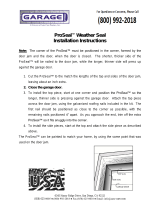 ProSeal 58036 Operating instructions
ProSeal 58036 Operating instructions
-
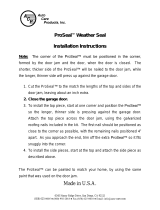 ProSeal 58026 Installation guide
ProSeal 58026 Installation guide
-
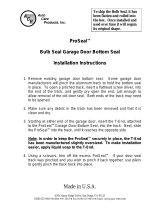 ProSeal 56020 Installation guide
ProSeal 56020 Installation guide
-
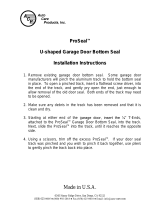 ProSeal 55010 Installation guide
ProSeal 55010 Installation guide
-
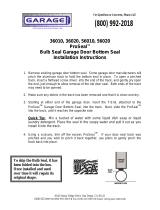 ProSeal 56010 Operating instructions
ProSeal 56010 Operating instructions
-
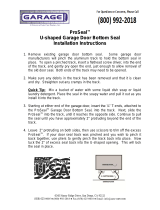 ProSeal 55020 Operating instructions
ProSeal 55020 Operating instructions
-
Greenheck Fan 35 User manual
-
Unbranded RA 16 Installation guide














